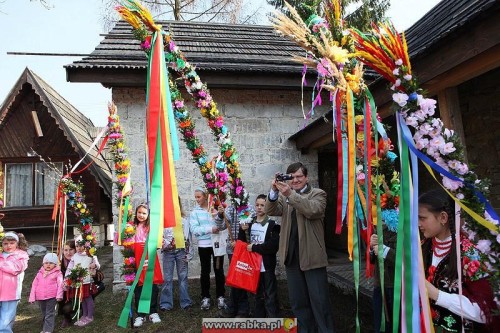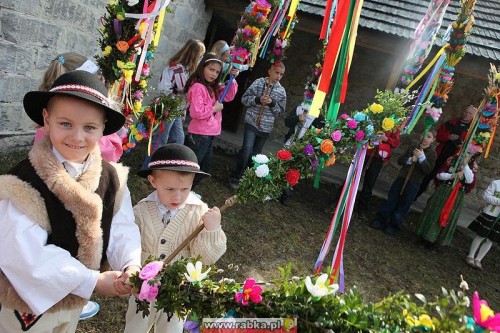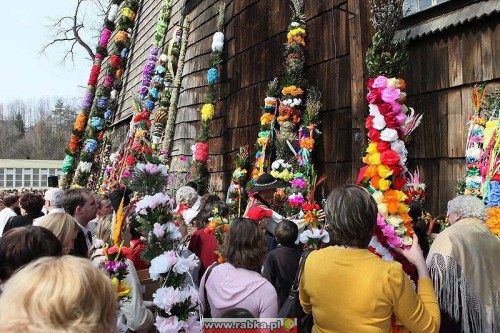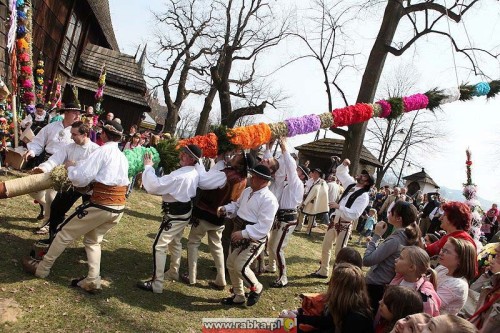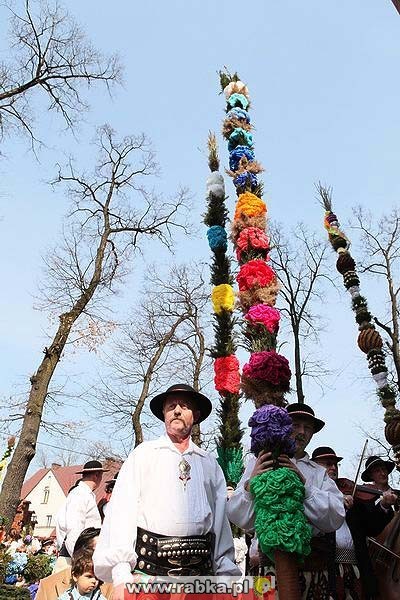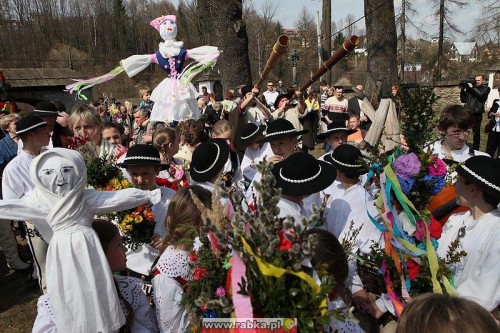lamus-dworski:Palm Sunday (Niedziela Palmowa) in PolandOn pictures: celebrations in the town of Rabk
lamus-dworski:Palm Sunday (Niedziela Palmowa) in PolandOn pictures: celebrations in the town of Rabka-Zdrój and the nearby village of Ponice, southern Poland. Sources: 1,2.Tradition of preparing the decorative and colorful ‘Easter palms’ for the blessing in churches on the Palm Sunday (last Sunday of the Lents before Easter) is an old and very important custom in Poland. Just like in the old days, in many locations across Poland these celebrations still take a form of colorful processions and are held alongside secular events, for example competitions for the most beautiful or the longest construction of the ‘palms’.Easter palms may reach as high as 10 metres (33 ft). In the 2011 edition of an Easter palm competition that has been held yearly since 1958, one entry reportedly topped 36 metres (118 ft), making it the tallest Easter palm on record. [x]The decorated branches are called ‘palms’ as a reference to the bilbical entry of Christ into Jerusalem, but these celebrations show many remnants of old-Slavic customs of welcoming of the spring, native to Poland. This include the form and materials, or the way of preparing and later storing the symbolic ‘palms’. The ancient Slavic spring feast was synctretized with the Christian celebrations of Lents and Easter over the centuries. In the years when Easter falls in late March (Easter is a movable feast), the ‘palms’ are sometimes still accompanied also by the effigies of Marzanna (Slavic winter goddess that is ‘drowned’ in Poland around the spring equinox) and Wiosna (spring) - just like on the last picture above.The ‘palms’ are usually prepared of willow branches with catkins (bazie) and adorned with evergreen, paper ornaments, dried flowers, and ribbons. Symbolically, these ‘palms’ mean a victory of spring over winter (life over death), the nature’s rebirth and the strenght of life.After the blessing in churches the ‘palms’ were often symbolically ‘planted’ on crop fields to ensure a good harvest in the upcoming year. In some regions they were also used for blessing of the cattle or houses with sprinkled water. Later they are included among Easter decorations of the houses, often put on tables for the Easter breakfast, and in the past they used to be attached to relgious paintings as an adornment throughout the later spring months. It was considered a sin to throw away an ‘Easter palm’. They were often stored in the house and symbolically burnt (connected to old beliefs of fire being a cleansing force) only a year later, when a new blessed Easter palm was brought home.Links to check more:‘Palm Sunday’ tag for more pictures of this feast celebrated in Poland‘Easter’ tagArticle about pisanki - decorated Easter eggs + ‘pisanki’ tagMore about the goddess MarzannaCelebrations of drowning and burning of MarzannaMy general list of sources / book recommendations - in Polish only. -- source link
Tumblr Blog : lamus-dworski.tumblr.com
#palm sunday#polish tradition#poland


